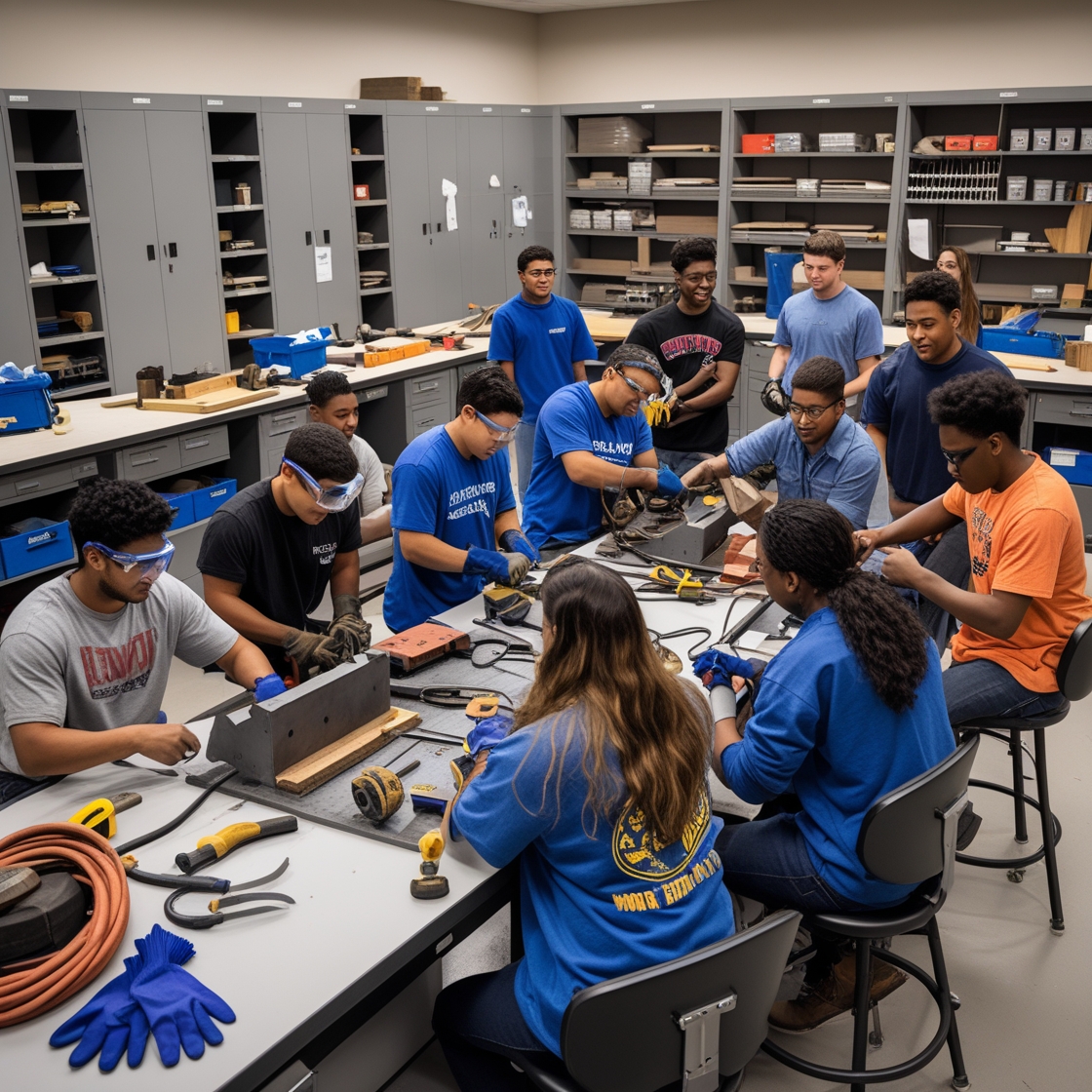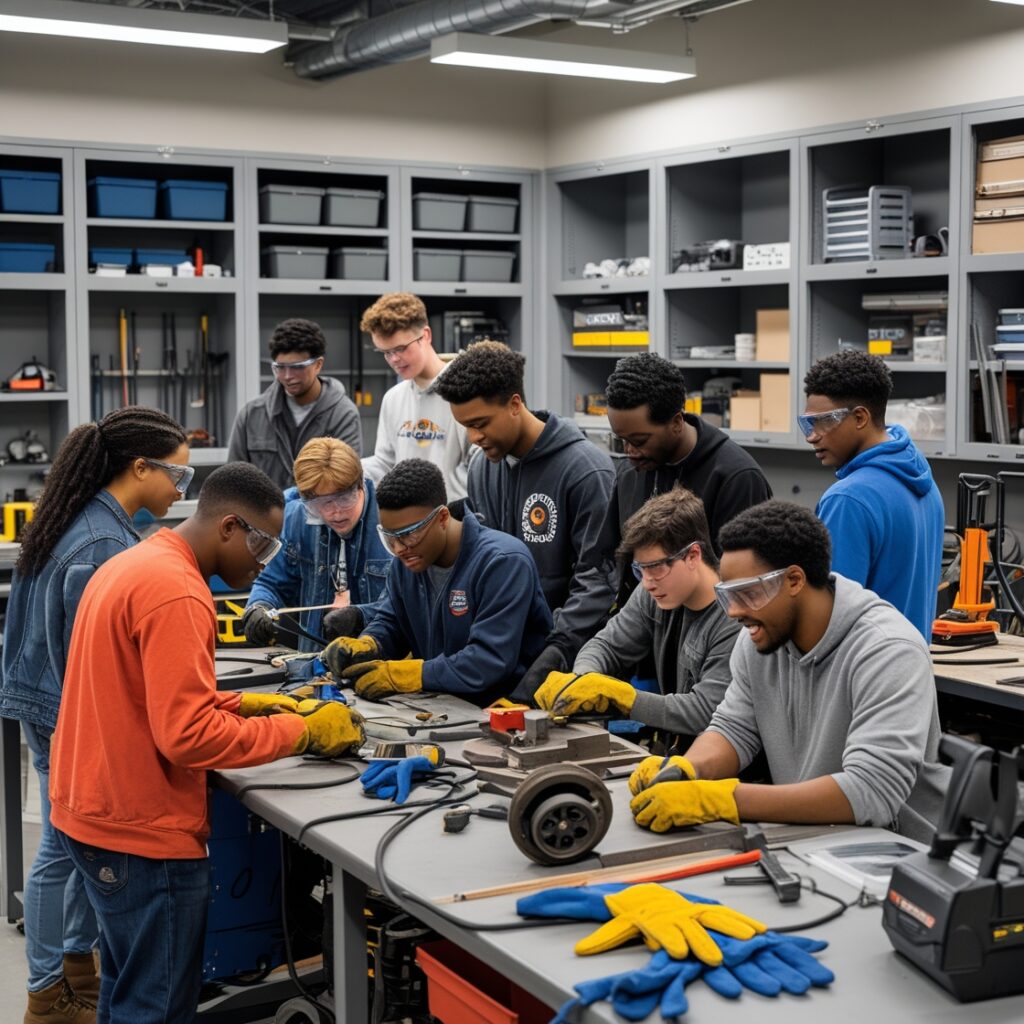For ambitious high schoolers with a passion for Science, Technology, Engineering, and Mathematics (STEM), choosing the right program can launch a lifetime of innovation and discovery. Across the nation, select public and charter schools have built outstanding STEM communities—combining challenging curricula, cutting-edge facilities, and real-world research partnerships. In this comprehensive guide, we’ll spotlight the top 10 U.S. high school STEM programs, detailing admissions criteria, academic offerings, hands-on opportunities, and notable achievements to help you find the best fit for your goals.
1. Thomas Jefferson High School for Science and Technology (Alexandria, VA)
Overview & Admission: Founded in 1985, TJHSST is ranked as America’s premier public STEM magnet. Admissions hinge on rigorous testing, academic records, and an interview.
Academic Pathways: Students choose from specialized tracks—Biotechnology, Computer Science, Environmental Science, Systems Engineering—paired with mandatory research projects.
Facilities & Partnerships: Home to a nanotechnology cleanroom, advanced robotics lab, and high-performance computing cluster. Close collaborations with NASA’s Goddard Space Flight Center and NIH fuel yearlong mentorships.
Student Achievements: TJHSST routinely produces Intel ISEF finalists and national robotics champions. Graduates matriculate to top-tier universities and lead Fortune 500 tech teams.
2. Illinois Mathematics and Science Academy (Aurora, IL)
Overview & Admission: IMSA offers a three-year residential program for juniors and seniors, selected through a state exam, essay, and recommendations.
Academic Rigor: Curriculum spans Multivariable Calculus, Organic Chemistry Research, and Data Science electives. Personalized learning plans encourage interdisciplinary projects.
Innovation Studio: Features 3D printers, VR development labs, and biotechnology suites.
Research Collaborations: Partnerships with the University of Chicago and Argonne National Laboratory enable students to co-author papers and present at symposiums.
3. Bronx High School of Science (Bronx, NY)
Overview & Admission: Established in 1938, Bronx Science admits students via the SHSAT. It has produced multiple Nobel laureates.
Course Offerings: Robust AP and IB tracks in Physics, Computer Science, and Advanced Mathematics.
Extracurriculars & Research: Teams compete in Science Olympiad, FIRST Robotics (Team 341), and summer research at Columbia University.
Legacy & Impact: Alumni include Nobel Prize and Fields Medal winners; campus amenities include a greenhouse lab and digital media studio.
4. Montgomery Blair HS Magnet for Science, Mathematics & Computer Science (Silver Spring, MD)
Overview & Admission: One of the oldest STEM magnets, requiring entrance exams and auditions.
Curriculum Highlights: College-level Computer Science research, Biomedical Engineering in collaboration with NIH, and Advanced Robotics.
Student-Led Initiatives: Blair TECH incubator supports AI app development; annual “Blair Turbo” hackathon draws NIH and FDA mentors.
Lab Facilities: Onsite biotechnology lab facilitating DNA sequencing and CRISPR experiments.
5. North Carolina School of Science and Mathematics (Durham, NC)
Overview & Admission: A two-year state residential school for top-performing juniors and seniors, selected via a competitive process.
Academic Emphasis: Courses in Quantum Mechanics, Computational Biology, and Advanced Data Analytics.
Innovation Lab: Equipped with laser cutters, CNC machines, and bioinformatics workstations.
Industry Internships: Partnerships with Duke University and Research Triangle Park companies for hands-on research and presentations at state symposia.
6. Massachusetts Academy of Math and Science at WPI (Worcester, MA)
Overview & Admission: Located on WPI’s campus, MAMS serves juniors and seniors with a selective, dual-enrollment program.
Coursework: Students enroll in college-level classes—Computational Robotics, Environmental Engineering, Biochemistry—taught by WPI faculty.
Research & Credit: Collaborative projects earn both high school and college credits; mentorship includes graduate-level resources.
Community & Events: Regular hackathons, science festivals, and seminars led by university researchers.
7. DSST: Environmental and Spatial Technology (Denver, CO)
Overview & Admission: Lottery-based admission enhances diversity.
Integrated Curriculum: Combines STEM fundamentals with Environmental Science and GIS mapping.

Hands-On Learning: Field research includes water quality testing and drone-based spatial surveys.
University Partnership: Collaboration with the University of Colorado Boulder for sustainable engineering projects; extracurriculars include the Eco-Engineering Club.
8. Bergen County Academies: Academy for Engineering & Design Technology (Hackensack, NJ)
Overview & Admission: Competitive application, including essays and interviews.
Engineering Tracks: Civil, Mechanical, Electrical, and Chemical Engineering majors.
Prototype Lab: Houses CNC mills, laser cutters, electronics benches, and 3D printers.
Community Projects: Capstone initiatives partner with local governments to address infrastructure needs; students exhibit innovations at the annual Engineering Expo.
9. Houston ISD STEM Early College High School (Houston, TX)
Overview & Admission: Application-based selection, prioritizing underserved communities.
Dual-Credit Model: Students graduate with both a high school diploma and an AA degree in fields like Petroleum Engineering and Nanotechnology.
Research Internships: Ties with Rice University and University of Houston provide lab placements and guest lectures.
Special Facilities: Onsite cleanroom for nanofabrication and industry-standard software development labs.
10. BASIS Charter Schools Network (Various Locations)
Overview & Admission: Lottery or merit-based entry depending on campus.
Rigorous Curriculum: Six mandatory AP courses in Sciences and Mathematics; independent research projects.
Specialized Labs: Dedicated spaces for Robotics, Genetics, and Computer Graphics.
Global Exchange: International Science and Engineering Fair participation and cross-campus research trips under the Global Science Exchange program.
Conclusion: Selecting Your STEM Launchpad
Choosing the right high school STEM program involves balancing academic rigor, research opportunities, community culture, and your personal learning style. Whether you thrive in a residential research environment, seek diverse lottery-based admissions, or prefer early college credit, these ten programs represent the pinnacle of STEM education in U.S. high schools. Visit campuses, speak with students and faculty, and review outcomes to find the environment that will best nurture your innovative spirit.


